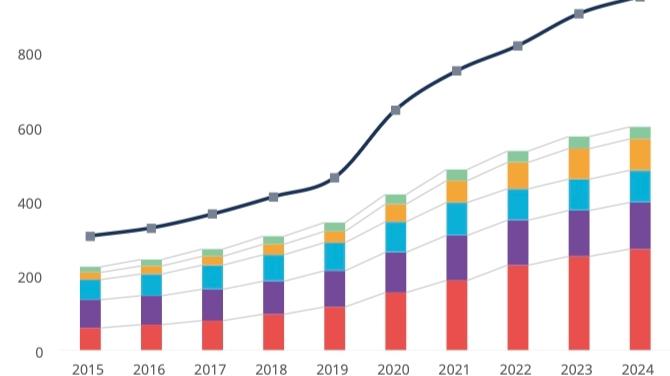
- Home
- Media Center
-
Events
- Wuzhen Summit
- Regional Forums
- Practice Cases of Jointly Building a Community with a Shared Future in Cyberspace
- World Internet Conference Awards for Pioneering Science and Technology
- The Light of Internet Expo
- Straight to Wuzhen Competition
- Global Youth Leadership Program
- WIC Distinguished Contribution Award
- Membership
- Research & Cooperation
- Digital Academy
-
Reports
- Collection of cases on Jointly Building a Community with a Shared Future in Cyberspace
- Collection of Shortlisted Achievements of World Internet Conference Awards for Pioneering Science and Technology
- Reports on Artificial Intelligence
- Reports on Cross—Border E—Commerce
- Reports on Data
- Outcomes of Think Tank Cooperation Program
- Series on Sovereignty in Cyberspace Theory and Practice
- Other Achievements
- About WIC
- 中文 | EN

China emerges as global powerhouse in AI publications, white paper says

The white paper reveals striking trends in global AI journal papers, which have tripled from 308,900 in 2015 to 954,500 in 2024. [Photo provided to chinadaily.com.cn]
China's influence in the realm of artificial intelligence (AI) publications has surged over the past decade, with the country now accounting for a significant 29 percent of the global output, according to a white paper released on Monday.
The white paper, titled "AI for Science 2025", was jointly produced by Fudan University and the Shanghai Academy of AI for Science, with the support of Nature Research Intelligence. Delving into the transformative impact of artificial intelligence on scientific discovery, the report sheds light on the profound changes AI is catalyzing across various disciplines, including mathematics, life sciences, and physical sciences. It also explores the emerging paradigms and strategies that are reshaping the future of science through intelligent innovation.
Drawing upon a wealth of multi-source global data spanning from 2015 to 2024 and featuring insights from nearly 60 interdisciplinary scientists, the report provides a comprehensive analysis of AI's evolving role in seven major scientific fields, 28 research directions, and nearly 90 pressing challenges and solutions. It underscores the dual integration of AI innovation into scientific research and the reciprocal relationship between scientific progress and AI advancement.
The white paper spotlights several groundbreaking achievements that underscore the transformative potential of AI in scientific endeavors. Notable milestones include advancements such as DeepMind's AlphaFold, Google's GraphCast, Huawei's Pangu, and SAIS-Fudan's Fuxi model, which has significantly enhanced the accuracy of weather forecasting. AI is also driving progress in areas such as nuclear fusion control and autonomous labs, ushering in innovative solutions in energy and materials science.
Furthermore, the report reveals striking trends in global AI journal papers, which have tripled from 308,900 in 2015 to 954,500 in 2024, reflecting a robust 14 percent annual growth rate. China's rise in AI publications is particularly noteworthy, soaring from 60,100 in 2015 to 273,900 in 2024. Surpassing the European Union in 2018 and outpacing the combined total of the EU and the United States by 2022.
While the United States continues to lead in citations, China has captured a substantial 40.2 percent share of the global total. China's dominance extends to applied innovation areas such as patents, policy, and clinical trials, where it commands a commanding 41.6 percent of global citations.
China's leadership in AI applications within earth and environmental sciences and engineering integration is particularly noteworthy, while the European Union and the United States excel in life sciences. Notably, India is rapidly closing the gap, nearing US publication levels and securing a solid third-place ranking in multiple domains.
Despite a decline in China-US collaboration since 2020, the white paper highlights a significant uptick in joint publications by scientists from both countries, doubling from 2015 to the end of 2024. This collaborative spirit underscores the global nature of scientific inquiry and the potential for cross-border partnerships to drive innovation and progress in the dynamic field of artificial intelligence.

The World Internet Conference (WIC) was established as an international organization on July 12, 2022, headquartered in Beijing, China. It was jointly initiated by Global System for Mobile Communication Association (GSMA), National Computer Network Emergency Response Technical Team/Coordination Center of China (CNCERT), China Internet Network Information Center (CNNIC), Alibaba Group, Tencent, and Zhijiang Lab.





